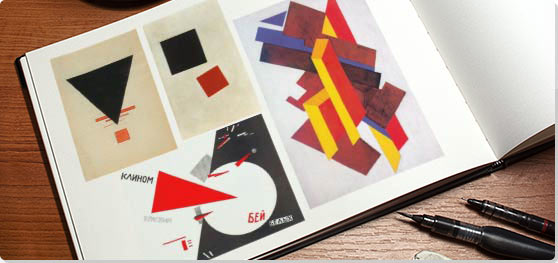Lecture Summary
This week’s lecture covered the time period of 1915 – 1925 which immediately tells us that World War I happened during that time. It influenced everything and everybody in the world, including design. A lot of propaganda posters were created to get people to participate in the war and support one’s country. Although it had one of the deadliest outcomes, the world of art and design was changed forever.
Suprematism is an art movement, focused on basic geometric forms, such as circles, squares, lines, and rectangles, painted in a limited range of colors. This was a completely new concept at the time – completely fascinated artists all over the world. It is also considered to be the beginning of conceptual art. The founder of this movement was a Russian artist Kazimir Malevich.

Kazimir Malevich
He is most famous for his painting Black Square. The name pretty much sums up what the painting looks like, however, there is a lot more meaning behind it. Suprematism focused on the absence of any physical objects, and the Black Square communicated that perfectly.
Like Malevich explained once,
“Under Suprematism, I understand the primacy of pure feeling in creative art. To the Suprematist, the visual phenomena of the objective world are, in themselves, meaningless; the significant thing is feeling, as such, quite apart from the environment in which it is called forth.”

El Lissitzky
Lissitzky was one of the very successful Malevich’s students. His work greatly influenced the Bauhaus and constructivist movements, and he experimented with production techniques and stylistic devices that would go on to dominate the 20th-century graphic design.


Sources